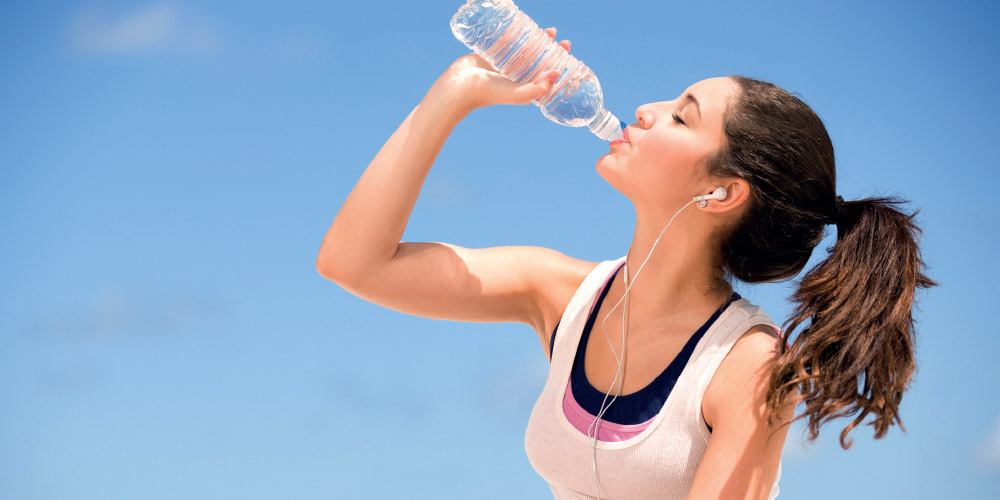Fifty-four per cent of shoppers are looking to reduce their sugar intake, so the low-sugar soft drinks market is ripe for the picking, writes Joseph Lee.
What's the opportunity?
Health concerns, the Government’s forthcoming sugar levy and changing customer tastes are all combining to make low-sugar drinks a big growth category. If you don’t already stock low-sugar drinks, you are missing out.
Ed Jones, senior customer marketing manager at Vimto Soft Drinks, says retailers need to take notice of what’s happening in the market in order to maximise sales opportunities.
“We know that as many as 54% of consumers are looking to make low-sugar purchases. However, no added sugar only accounts for 21% of the soft drinks range stocked in most impulse stores,” he says.
The market is worth £460m to independents and is expected to reach £575m by 2019.
Mark Sterratt, market, strategy & planning director at Lucozade Ribena Suntory, says: “The growth of low-calorie soft drinks is outpacing the growth of the wider soft drinks category and, with water excluded, now claims a 30% share of total soft drinks sales across the market.”
The growth of low-sugar soft drink sales is fastest in independent retailers, with a rise of 12.1% compared to 7.8% in the overall market.
“Consumers are increasingly looking to the impulse channel to pick up their healthier drinks,” says Sherratt. “Shoppers who are interested in healthier options in store also typically spend more, so these consumers should be a key target for independent retailers.”
What makes a great range?
You should aim to have all bases covered by providing a low-sugar alternative for different types of drinks.
“Retailers should offer consumers the choice and variety they seek by having low-sugar options in every segment of the soft drinks markets,” says Lucozade Ribena Suntory’s Mark Sterratt.
This also means you should stock a variety of formats, including large bottles and multipacks, which are growing 2.3% per year and are worth £434m to independent retailers.
It’s particularly important to get this balance right in energy drinks, which is the bestselling soft drinks sector for independents.
But the fastest-growing low-sugar soft drink is water. Sales of water are up 10% over the past year and make up one in five of all soft drinks sold in independent stores.
“The volume of bottled water sold through the convenience channel has increased year on year, with 32% of the category value sales going through convenience and impulse,” says Shellie Silika Shellie, head of category & shopper development at Nestlé Waters.
How can you drive sales?
You should make sure your range is built around the bestselling brands to drive soft drinks sales, with low-sugar alternatives next to the original flavours.
“Retailers should group different sectors together. For example, colas, flavoured carbonates, energy drinks, waters, juices and juice drinks, should be put together, with bestsellers in the most prominent display locations,” says Amy Burgess trade communications manager at Coca-Cola European Partners.
In summer, your sales can benefit from PoS that tells shoppers you have chilled soft drinks in stock. Shellie says: “Retailers can also increase sales by siting bottled water next to on-the-go products, such as coffee machines or fresh bakery, to help to drive cross-category purchases.”
Make sure your soft drinks are known for having healthy options. James Logan, Refresco commercial director, says: “Offer consumers drinks that contain one of the five a day and signpost other low-sugar drinks as ‘healthier’ rather than diet products,” he says.
Retailers Views

“People are diversifying away from traditional soft drinks because they want to try something new.
“I would say my sales are about half and half at the moment between sugary drinks and sugar-free. I’ve got one shop where they don’t want anything except standard products – they want a sugar rush, but in other areas people are cutting back on sugar.
“In an affluent area, they tend to want sugar-free drinks. It’s better for your teeth and better for your health.”
Chris Herring,
Londis Shiphay Post Office, Torquay

“We introduced low-calorie drinks and the test for us was the last promotion we did. We put 2l bottles of standard soft drinks and low-calorie versions at the front of the store, and sales were on a par.
“It was a good exercise to see if customers would pick it up and they did. We’ve now given low-calorie drinks a home on the main shelves, alongside the original versions and we’ve done the same in the chiller for 500ml bottles.
“Slowly but surely, people are switching over. A lot of people don’t like change, but once they’ve tasted it and it tastes the same, people start asking for it.”
Bal Singh,
Nisa Local, Birmingham






Comments
This article doesn't have any comments yet, be the first!